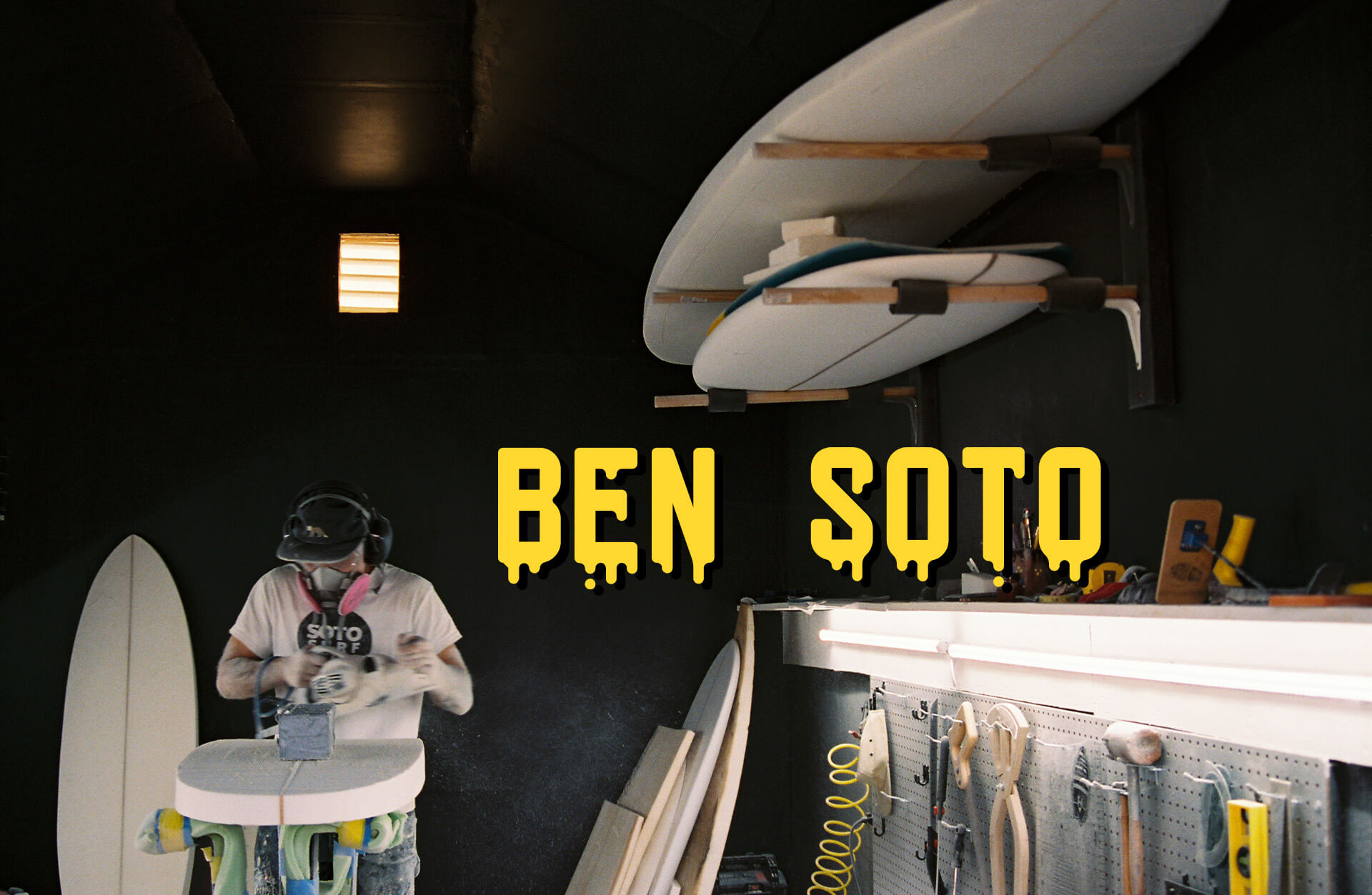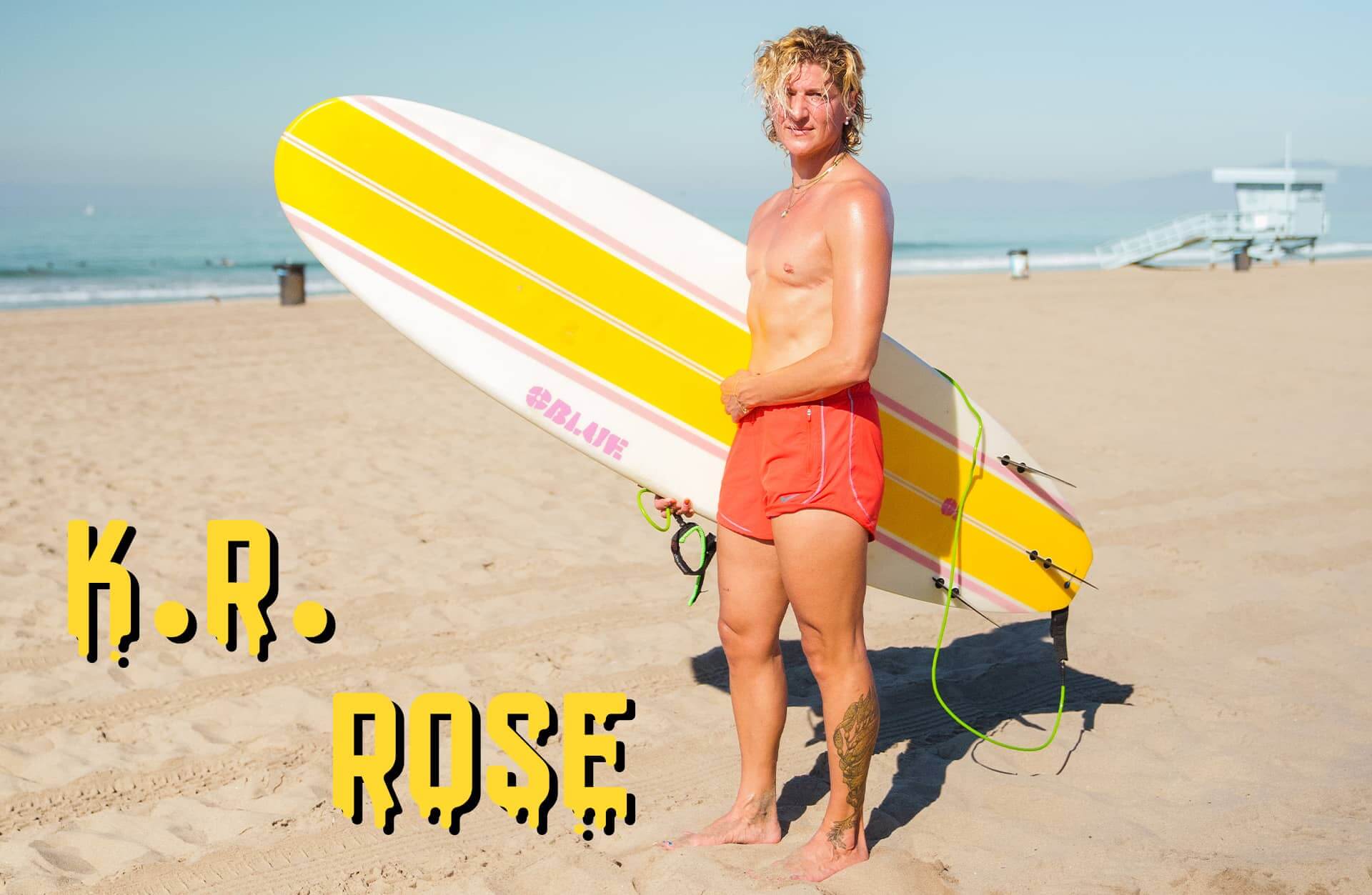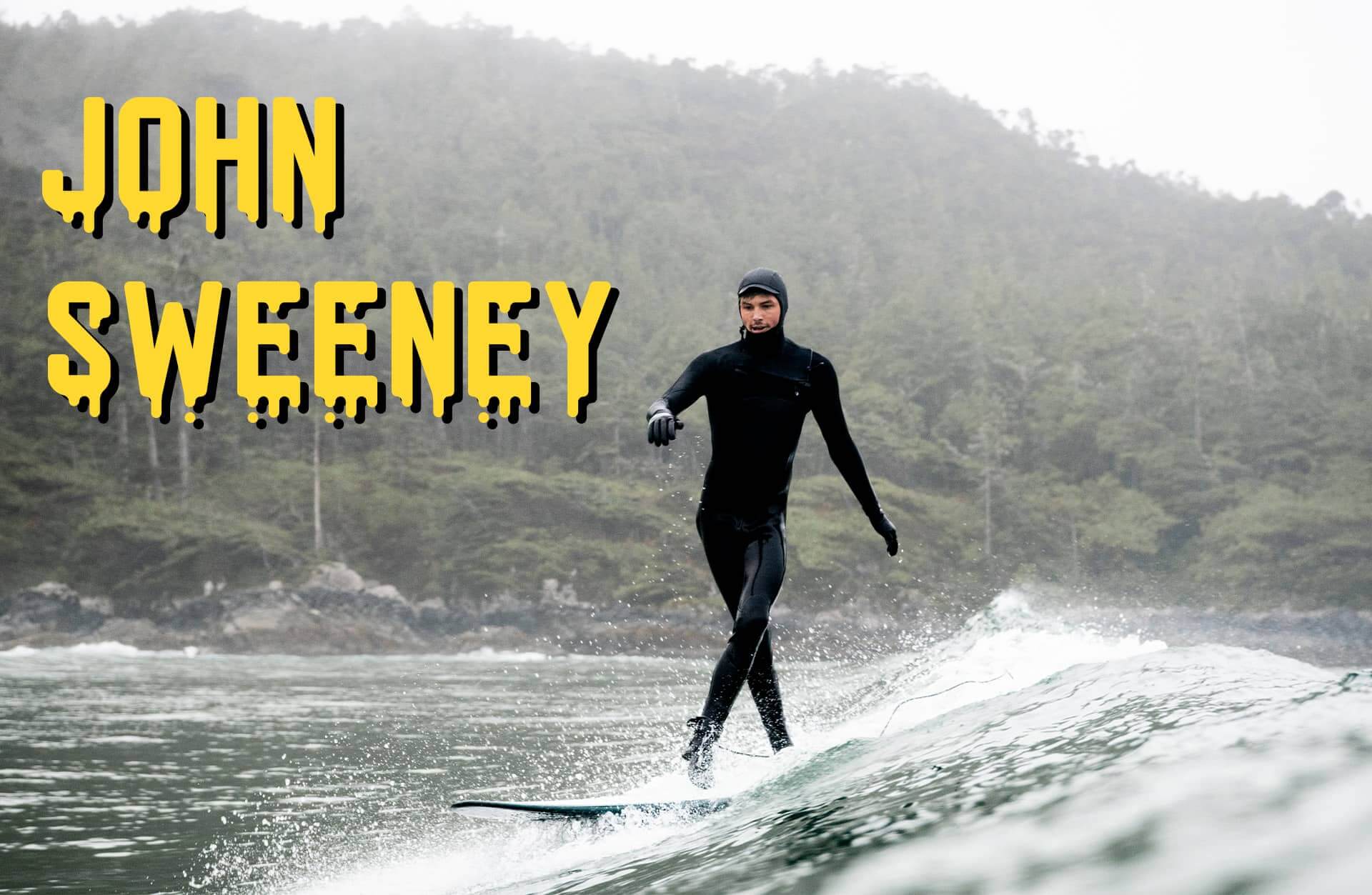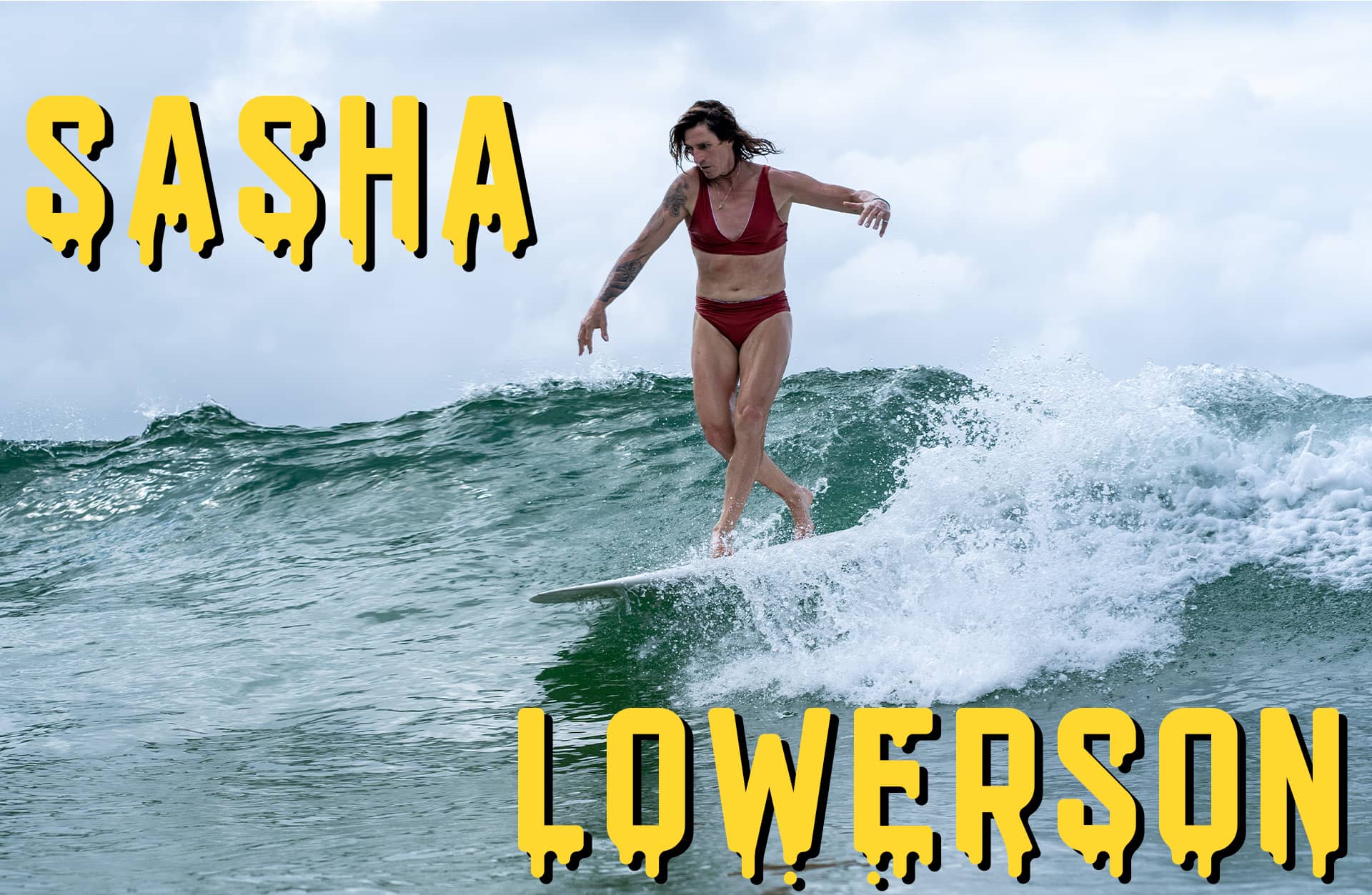SURF // 03 SEP 2024
SPIRITUALITY IN SHAPING
“That energy that you ride when you surf, to me at least, is absolutely the energy of God,” explained trans surfboard shaper Ben Soto. “That’s why surfing makes you feel that way. Because when you go to ride a wave, it’s not just the water that’s moving but this unseen energy underneath. The water just sits there, it’s this unseen energy that comes from the sun and storms very far away that moves. [The waves] make this thing that when you ride on it, it just makes you so happy and sets you free. You’re in the moment and nothing else matters.”
Growing up in Orange County, Soto was immersed in surf iconography from day one. “You can’t go anywhere without seeing it used for an ad or something,” he laughed. The regional obsession with the sport makes sense given its prolific history. “There are spots up in Santa Cruz, but the majority of stuff was from Santa Barbara to San Diego, when [the American surfing craze] started in the 60’s. Hobie, Velzy, Rennie Yeater, Greg Noll, all those shapers that started [that movement], they were all from here or ended up here.”
Thus, it was no shock that Soto grew up a water baby. Learning to swim before he could walk, he would be out in the ocean playing any way possible. Swimming, boogie boarding, and of course surfing.
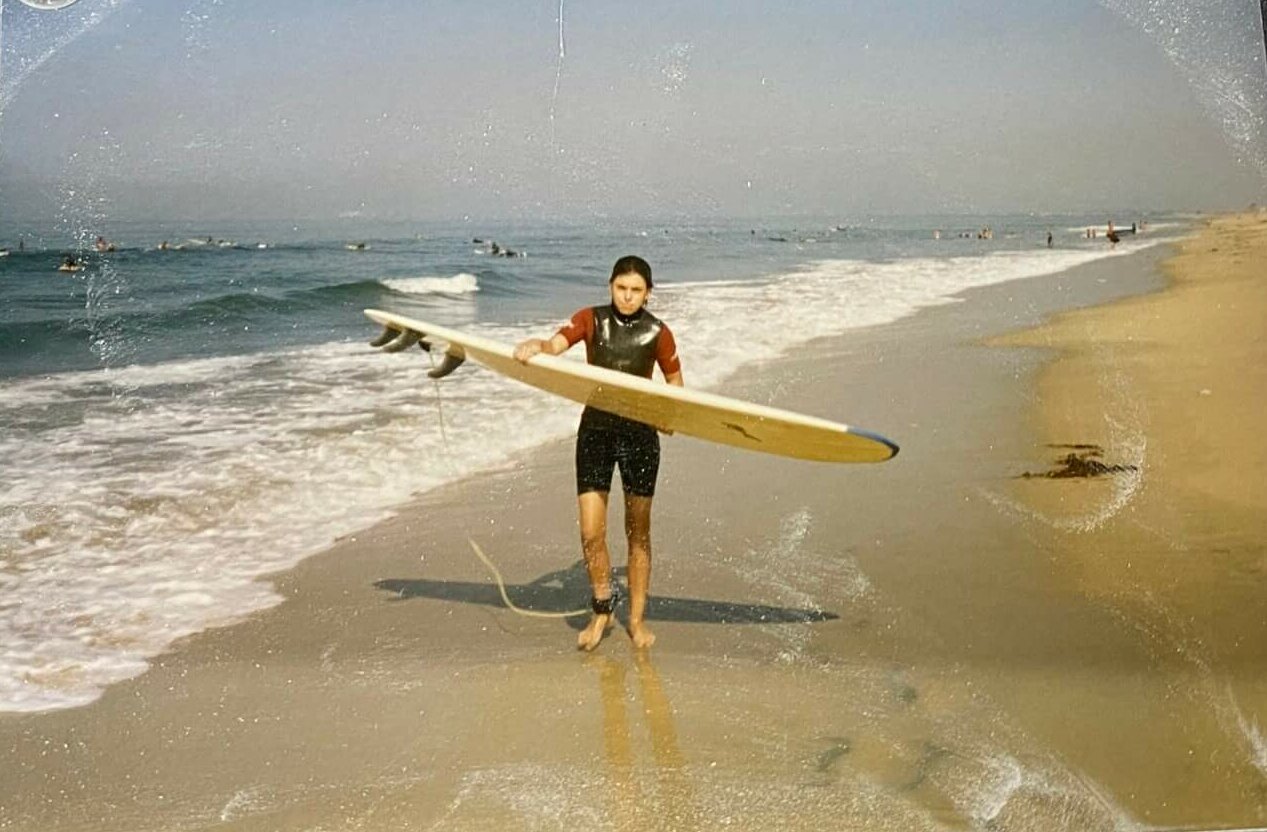
However, as Soto hit puberty, body dysmorphia set in. Making getting into the water a struggle. “The thought of wearing a wetsuit, which is very revealing because it’s very body hugging, didn’t fly with me,” he explained. “I just kind of stopped surfing.”
In the late 80’s and early 90’s of Soto’s childhood, there was no rainbow month, capital ‘P’ Pride. Instead there were games of smear the queer. “I was like, ah fuck, that means me,” chuckled Soto. “And I didn’t even know what the fuck queer meant because my parents are conservative. I went to a very small, private lutheran school. I had no influence. [There was] Jerry Springer, they had transgender people on there, but it was usually the MTFs. Or you saw [transgender people] on Cops as prostitutes. So I grew up in a time where this wasn’t cool at all.”
Soto knew he identified with the queer community, but a lack of information and resources made it difficult to know exactly where he fit in. Unsure, he tried on the label of ‘lesbian’ to see if it fit right, but things still felt off. Thankfully, Soto’s first girlfriend connected the dots using the knowledge gained from a pertinent Oprah special. “[It was] about transgender kids. A whole variety of kids, MTF, FTMs – people like me,” said Soto. “[My girlfriend] was like, I think you need to watch this. So I watched it, and I was like, oh my God.”
In 2010, Soto transitioned and to his pleasant surprise, his conservative family supported his decision. “I had two old grandmas, they were really cool about accepting me. My whole family was, even my mom’s small town family up in the middle of nowhere didn’t care. Because when we told them what was going on, it had been so obvious throughout my life that it was kind of like, yeah, you know what, that makes sense,” he laughed.
Butter Mag is a 100% reader supported publication. By subscribing to Butter’s Patreon for as little as 2$/month, you keep Butter churning, so that together we can create a more diverse outdoor sports community.
After bopping around California for a bit post transition, Soto ended up back in his hometown. Leaving the endless possibilities of San Francisco behind, left him feeling listless and depressed. His best friend, so close she’s practically family, who’d moved with him, saw his struggle and gave an excellent suggestion. “She was like, ‘why don’t you start surfing again?’ So I got a boogie board, then a used surfboard, and started surfing again,” he grinned. “That’s when I had the idea to start shaping.”
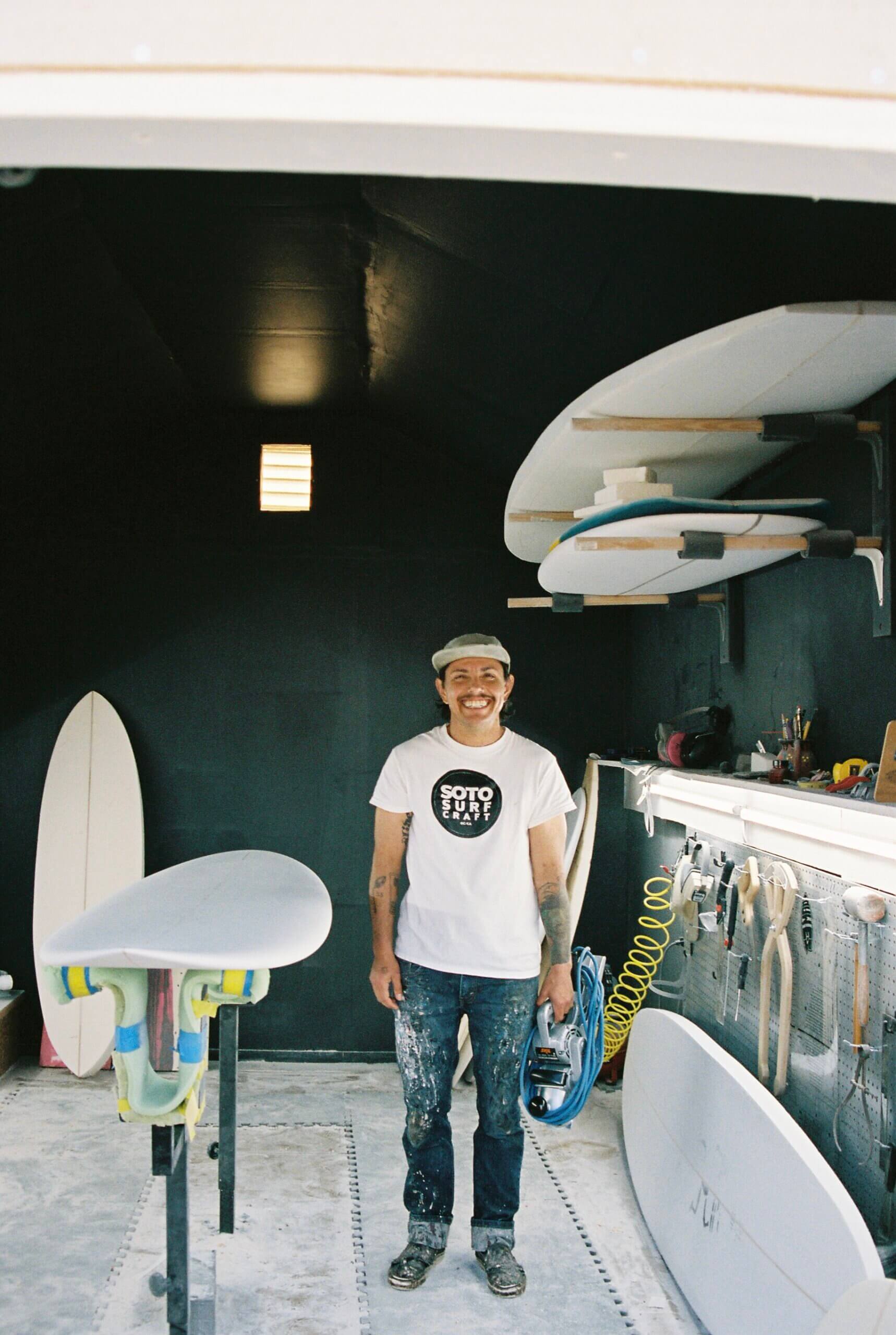
“It’s a science and an art when you shape,” explained Soto. “When you’re glassing, you have the chemicals and that’s the science part. But when you add in the pigment, do the different designs or [add in] fabric, that’s when it becomes art.”
However, it is an art that is easier said than done. Once the resin and hardener are mixed, the clock begins ticking, with just 12 minutes to laminate the board before the resin starts to harden. It’s a process of trial and error, or as Soto said, “having money to throw away”. So Soto began to work part-time, spending every extra dollar on supplies so he could learn how to shape.
Now, over 70 boards later, Soto still counts himself in the beginning stages of shaping. But through shaping those boards he’s learned lots of lessons, many of them the hard way.
“I had done a friend’s board, laminated it, and it fucking came out pretty good. I was going to do the [fin boxes]. You can do it after hot coating, but the hot coat is kind of slippery,” explained Soto. “It hadn’t been sanded yet, so it’s smooth resin. I put the fin router thing on to do the fin [box] on one side, and I didn’t think anything of it because I was holding it pretty good. I go to do [the center] fin and I bump the edge of the router too much and it cut a big old extra hole. I was all, aw, damn it.”
“I was able to fix it with white pigment resin. But then you could see this big thing of white resin. I was all, so what the fuck am I going to do? But this guy, on his last two boards I’ve made for him, we put gold flake in it. I was like, you know what? I’m just going to tape off the tail patch. Tape off the fin holes so it doesn’t go in the fin boxes. I’m just gonna sprinkle gold on this. I made sure to add more gold over whatever the fuck up was. And then I, like, hot coated over it a little bit, just so it’d be filled. Then you sand that flat, then you hot coat it again, and it got covered up.”
One of the key tools in a shapers toolbox is a planer. Used to slice foam of surfboard blanks, it’s what makes the shaping part of board shaping possible. So when Soto’s died one day mid-board, he was in a pickle. “There’s this planer that shapers love and they haven’t made it since the eighties. So you can’t get them anymore,” he explained. “And when you see them, even when they’re fucking just rust buckets, like used and abused tools, the people still want $1,000 for them.”
Enjoying this article? Consider subscribing to our Patreon for as little as 2$/month to ensure we can keep sharing more stories like this in the future!
Browsing Craigslist, Soto found a planer listed three hours away in Santa Barbara at a steep discount from the typical 1k price tag. So he hopped in his car and booked it up North, with an extra hour added to drive to meet the seller in Santa Maria. Chugging his coffee and water, Soto soon faced a problem brought upon by the Pandemic at the time. No open public restrooms.
“I had to pee real bad,” laughed Soto, recalling his arrival. “The guy has the box out. He plugs it in, shows me that it starts. I’m like, ‘Okay, cool, cool. It works. Let’s go. It starts, let’s put this shit in here, because, like, I’m gonna find McDonald’s or something.’”
“So I’m walking the box to the car, and he’s following me. I’m like, oh, God, dude, come on. I just want to put this in here and leave. He walks up behind me and says, ‘I had hoped it would go to a surfboard shaper. It was sitting here waiting for you.’”
Rushing home, Soto eventually found a gas station with an open bathroom around the back. With his mind freed from waterfalls and rushing rivers, he was finally able to think as he sat in traffic. “I was like, ‘I swear to God, if this planer has 55 in the serial number, I’m gonna shit myself’,” he said. “So I get home after a whole seven hour day driving up there and then sitting in LA traffic coming back. I get in my room and I take a really deep breath, look up, and then I take the lid off, and I look down and the serial number says 553335. When I posted that on Instagram, a friend of mine told me 333 is also an angel number. When I looked it up, it said that that number means that you are on your right path.”
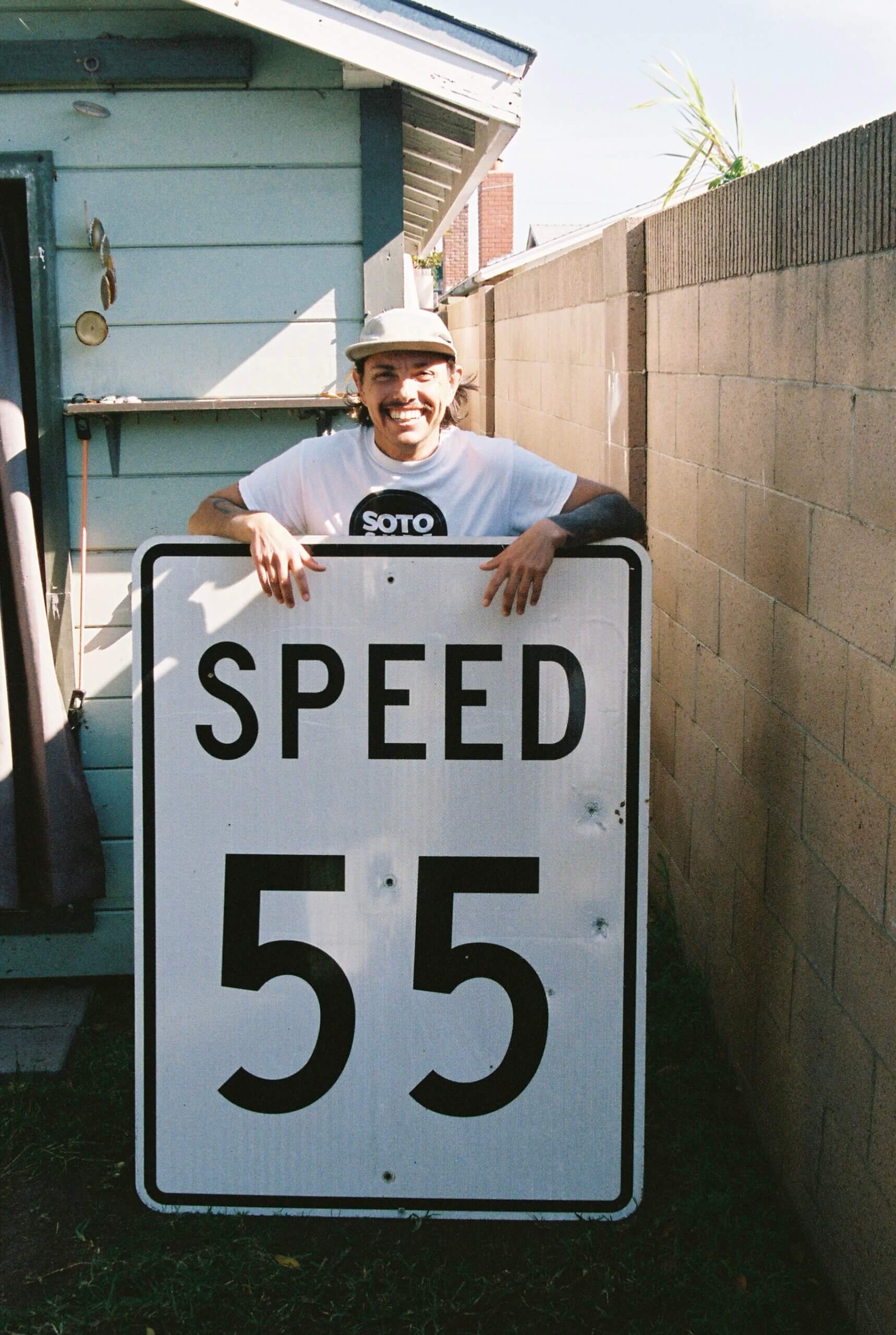
For Soto, 55 is a guiding motif in his life. A form of numerology, angel numbers are regularly occurring number sequences in one’s life that can be used as a guide for deeper spiritual exploration. 55 or 555 in particular are said to be representative of the grace of God.
Explaining his first awareness of the number’s significance in his life, Soto laughed. “When I tell the short version of it, I just sound crazy. [My best friend and I] were living in hotels when we first moved back down here. And we got to meet God.”
“[The guy’s name] in Kurdish means thoughtful. What does God want you to be but thoughtful?” said Soto. “[We did dabs together], each one’s different, you heat up a bucket for so long and then let it cool down. [I asked], ‘How long do I let it cool down?’ He said, ‘I don’t know, 55 seconds.’ And I didn’t think anything of that at first.”
But the number stuck for Soto, and it quickly became obvious that 55 was a larger theme in his life than he’d ever realized. “This house that I live in was built in 1955. My mom was born in 1955. When I got my top surgery, it was on her birthday, and she had turned 55.”
“My van that I have right now, [I had to get a new plate for it]. I was sitting there, the lines all long and I was like, man, I wonder if I could ask them if they have a plate that has 55 in it? And I’ll hear this voice [from time to time] that asks me questions. It just makes me be thoughtful. And it said, why don’t you wait and see what you get?”
The plate the DMV employee pulled from the front of the stack? It had 55 in it.
Spirituality plays a large role in Soto’s life, so it comes as no surprise that he brings that loving energy to his shaping as well. “Originally, the people in Hawaii that made the surfboards were priests, and they would have rituals and ceremonies when they were making the boards,” explained Soto. “They didn’t just see themselves as building a board.They were bringing something to life. So when I’m in there working, I have a very specific playlist of 700 songs that makes me feel happy, spiritual, that I’m doing this for this person and for God. [Or sometimes I’ll listen to books about] Muhammad, any religious books, any psychology books, anything. [Because] if you can start to see everything as God, then it truly changes everything.”
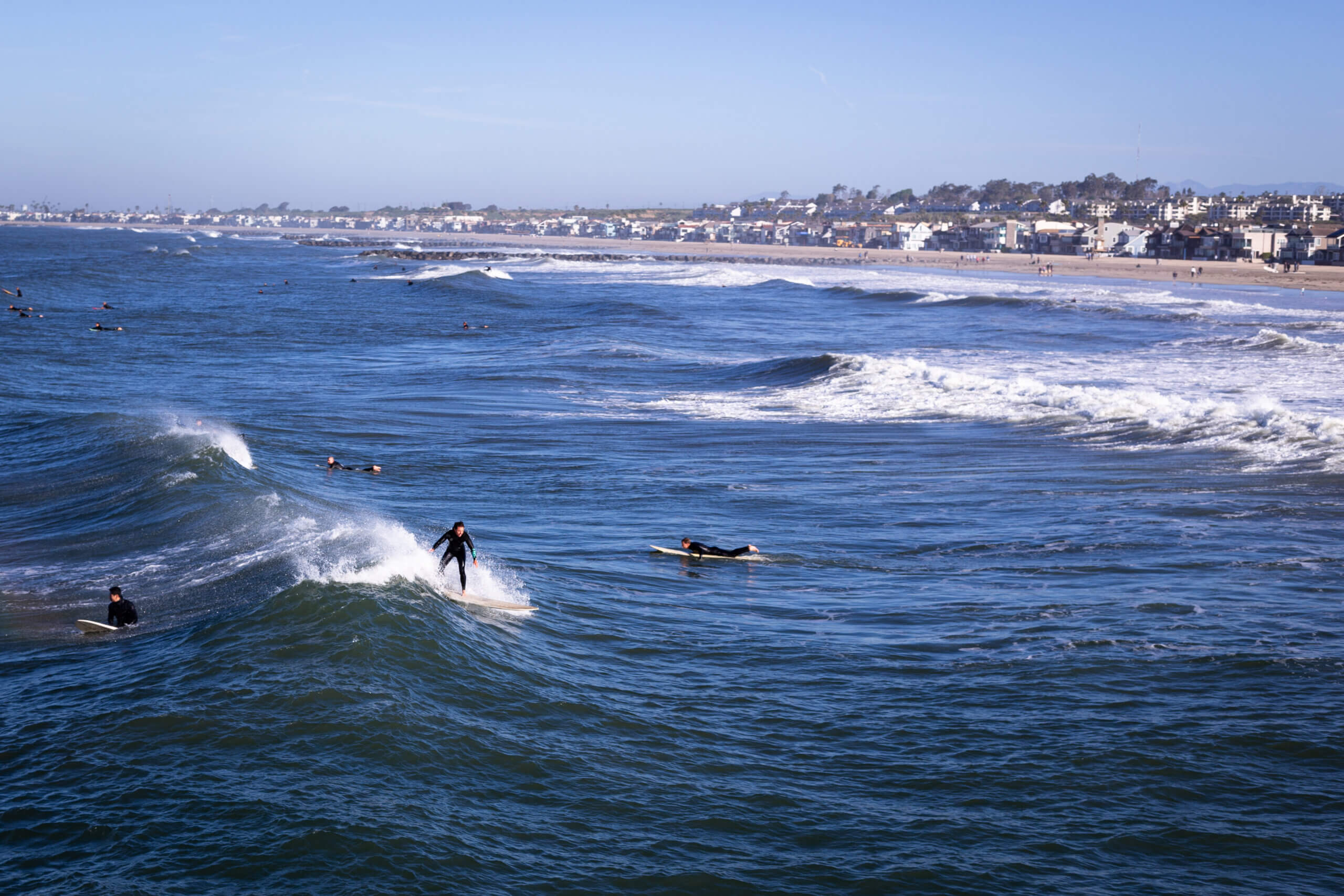
“When I make a board for someone, I try to make it for them, this dance they’ll do with God and this fun time that they’ll get to have. Because that’s what they try to tell us religion is, right? It’s supposed to set you free and make you happy, even though there’s struggles, you’re supposed to find peace and strength within the struggle. Surfing does that. Surfing sets you free.”
He continued, “I’ve been to church a lot, Eastern Baptist churches, and they don’t seem to set you free. They seem to impose a weight heavier, heavier and heavier every time you go. And for me, one of the reasons I feel like that is, is because they remove you from the natural world. They remove you from God and shove you in this man made building when the actual temples of God are the things that It created. The ocean, lakes, the Grand Canyon, the redwoods. That’s why when you go out in nature, you feel this energy and this peace. You can talk to the universe about things. You can figure things out in a clear fashion, but that only seems to happen when you go out into nature. I just try to be a part of that with shaping, you know?”
Looking forward, Soto has no plans to stop shaping anytime soon. Staying busy with ding repairs and custom boards, he continues to hone his craft, hoping one day to be able to open a warehouse with his brother. But even with dreams of expansion, there is one point where Soto holds strong:
“We will never use machines to shape this shit, because that is not what surfing is. You can use mass production shit for other stuff, like cars. But there are certain things I don’t want mass produced, like prayer beads. I want a fucking nun sitting in her monastery making one a day. There’s certain things, like surfing, where the sacredness of it needs to be kept.”
